Football Offensive Film Review: 3rd Down Passing
Money Down in College and in the Pros
This is a preview of our premium subscription. Subscribe today, so you don’t miss any of the paid articles for the 2021 football season. This article and others like it will be behind the paywall after the TCU game.
The most important down in football on offense and on defense is the 3rd down. No offense ever wants to face it, every defense craves to be in a situation to play it. Each offense practices 3rd down concepts from 3rd and long to 3rd and short.
During the game the team had 14 3rd downs, converting 6 of them, 1 on the ground on a 3rd and 1 and 5 through the air. Of the 3rd downs, 7 of them can be classified as short (1-3 yards). Of those 7, 3 were not converted due to execution errors, 1 was converted on the run, and 3 from receptions.
Each of the missed conversions came from the same pair of passing concepts
Shotgun Flanker Close, Y Hook/Tosser RB Swing
Attempt #1: Q2, 1:06, 3rd and 2.
Shotgun formation with the boundary side receivers close to the OL with an apex receiver and one a yard behind the LOS.
Tosser (double slant route) with an RB swing route on the backside of the play.
Y Hook (called double stick in some systems) is a Stick/flat route combination with the apex WR (Kekoa) running the stick in front of the LBs and the flat with Tonges.
This concept can be run from any formation as long as there is a stack (two receivers on one side close to each other with one behind the other). What lets this combination work is the fact that against man coverage the inside off-line receiver is covered by the inside LB/DB who has to work through the natural pick of the apex receiver running stick, the outside DB in man is lined up too far away to affect the flat. This also rings true in zone where the QB reads the flat defender (outside most DB) and makes a decision between stick or the flat.
The reason both of them are giving cushion off the LOS is due to the threat of crossing/drag routes mixing up their assignments.
Here we can see Nevada running man coverage with the LB #8 following Tonges outside with the DB respecting Kekoa’s speed by moving back. With his route Kekoa is taking away two defenders from the route as he knocks the LB and occupies the DB:
Here it’s a simple pitch and catch for Chase and Jake, however, as you can recall Chase skips the ball right in front of Jake… The scheme had him open, but the execution was lacking.
Attempt #2: Q3, 4:28, 3rd and 3
Let’s do this again:
Here Nikko motions to turn the formation from a spread out set into Shotgun flanker close, this time with the off LOS receiver on the outside shoulder of the apex receiver.
Tosser with RB Swing on the backside.
Double stick on the playside with Nikko motioning close to the formation from wide, this time Clark is the apex receiver with Nikko running the flat.
The DB and LB are again giving the cushion off the LOS.
Again, we can see the stick route getting in the way of the two defenders off the snap. Nikko is wide open for a 1st down even if #8 recovers Nikko would have the 1st down. However, in this case, Nikko failed to keep possession of the ball, and the tackle by #8 jars it loose for an incompletion. If Nikko were to hold onto the ball it’d be 1st down Cal.
As with any good Berkeley class, repetition is the mother of ability, this time the crucial redzone incompletion in Q4.
Attempt #3: Q4, 13:08, 3rd and 4.
Fill in the blank!
Nikko motions in to create _____ _____ _______.
_______ with RB ______ on the _________.
_____ _____on the _______ with _____ motioning close to the formation from wide, this time _____ is the apex receiver with _____ running the ____.
Again, the route combination has Nikko open in the flat, with the DB scrambling to try to make a play. Chase had a clean pocket but air-mails it way over Nikko for an incompletion.
That’s the ball game.
Each of these plays ran in nearly the exact same manner to the same side (boundary) of the field. Why boundary? Because this combination benefits from condensed space for the defenders to get lost in and the throw being easier since it has to travel a shorter distance.
In each situation, the execution of the throw or catch was lacking causing crucial 3rd down failures.
Drawbacks and opportunities down the stretch.
Look. If a schmuck like me with a laptop and way too much free time can figure out this tendency, then any DC/GA worth their salt can see that currently, this is the go-to play on 3rd and short for Cal. Since this is a very common concept in college and the NFL the counters for it are available where both stick and flat routes being covered and even interceptable if the defense can key into the tendency.
The answer to that counter is the stick-nod route which takes the simple stick route and turns it into a double move inside and the flat route turns into an inside breaking route to run into the space that the double move vacates. The LB covering the stick either runs with the double move opening up the space or stays in his assignment leaving the double move open.
Either way, I hope this gives y’all a quick look at the go-to concept that Musgrave dialed up for Cal and why it worked despite the highly fixable failures in execution.


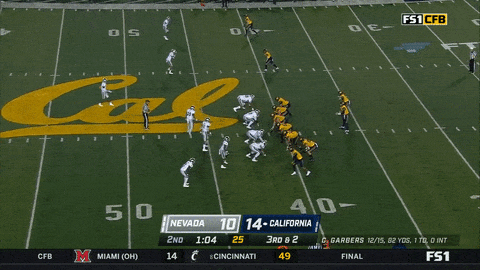
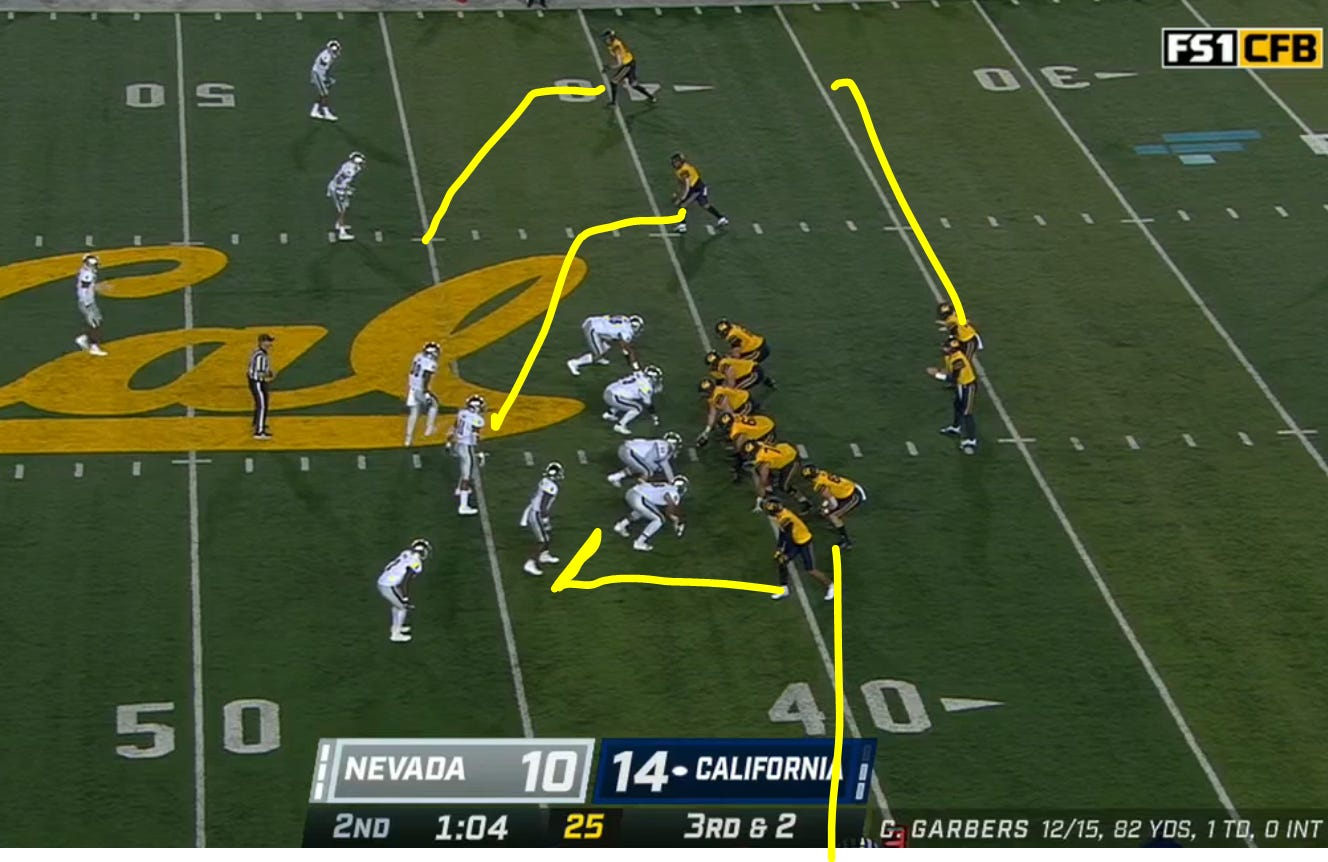
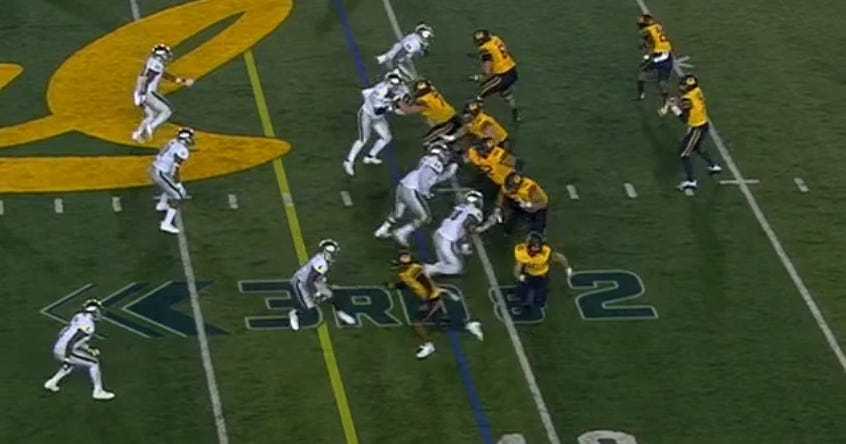
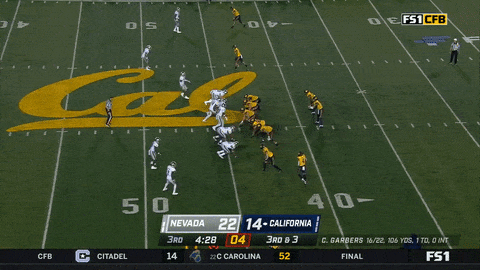
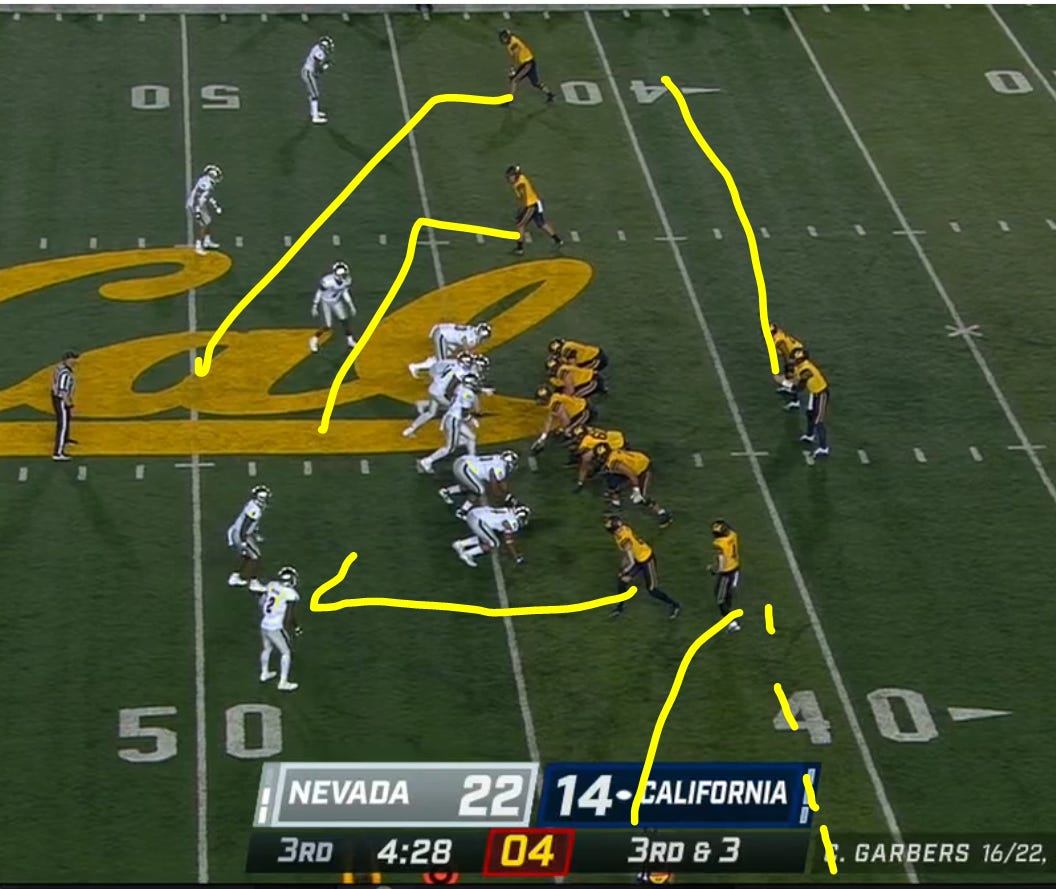
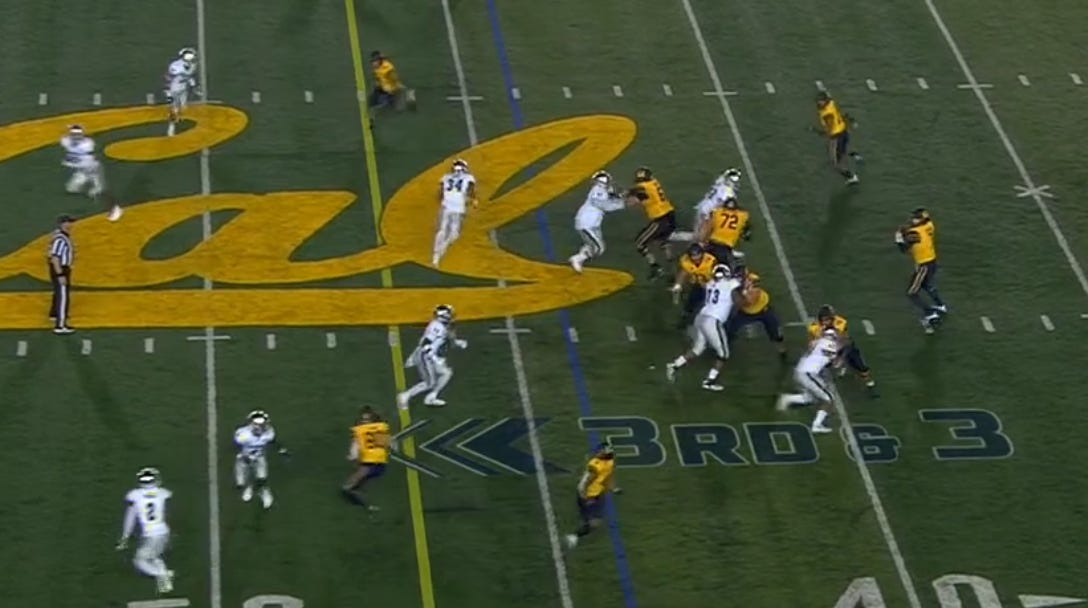
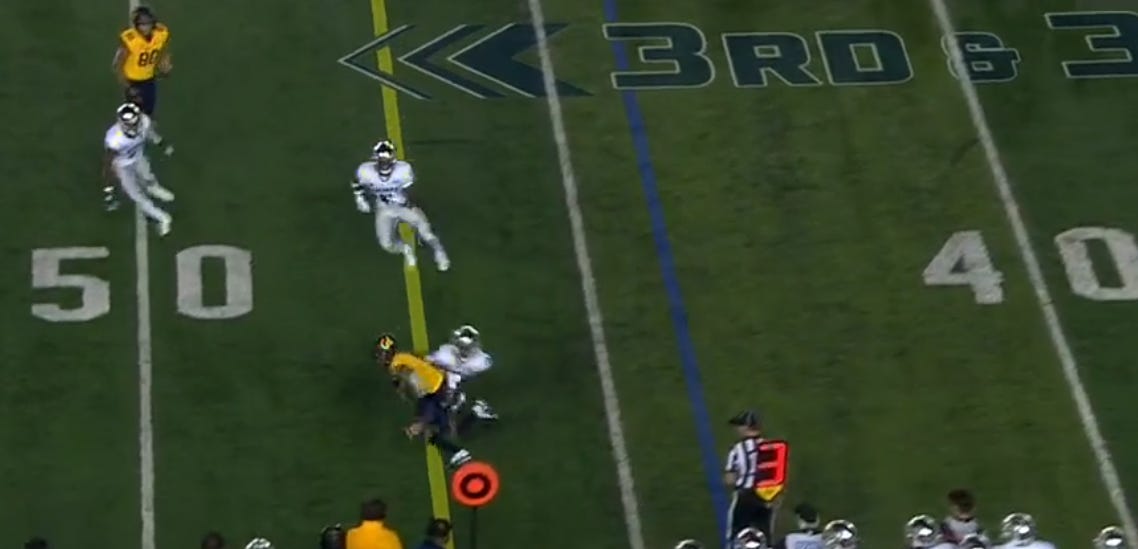
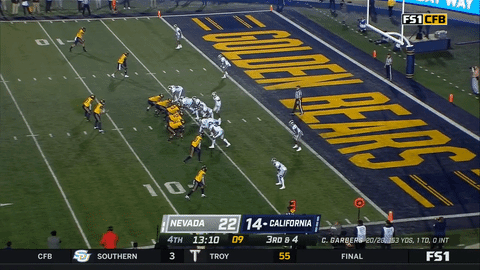
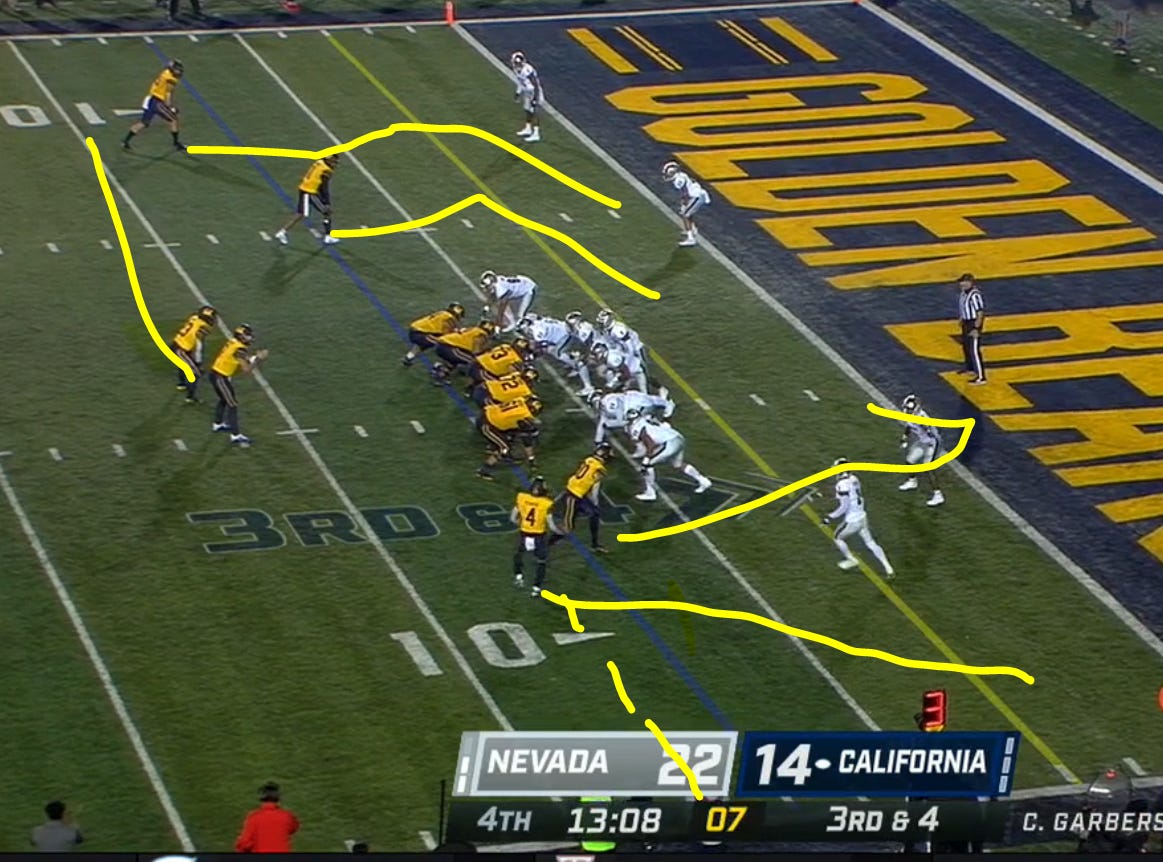
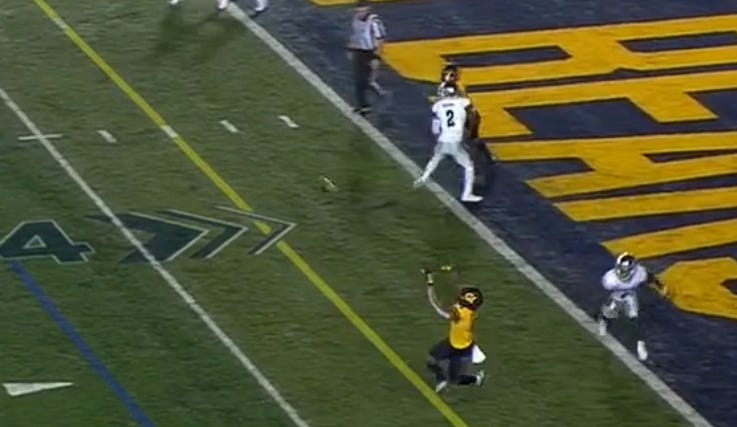
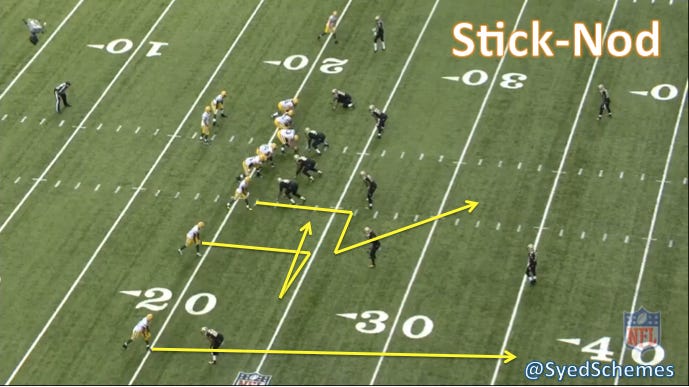
Combination of easy-to-predict plays on 3rd down and lack of execution by both QB and receivers. Gotta change this by Saturday.
One thing I noticed about Garbers in those clips and other plays is he doesn’t seem to step into his throws or step up into the pocket. It almost seems like he is just throwing off his back foot and just using his arm strength and not using his hips to help generate velocity on his throws.